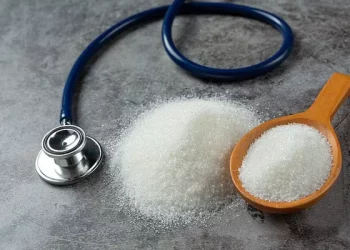Fasting blood sugar is one of the most fundamental indicators of metabolic health. It acts as a clinical cornerstone in diagnosing diabetes, monitoring glucose control, and evaluating the risk of developing chronic conditions like heart disease and insulin resistance. Yet, despite its importance, there remains considerable confusion around what constitutes “normal” fasting glucose, how it should be measured, and what fluctuations in levels truly signify.
As a diabetes physician, I’ve encountered countless patients seeking clarity on this very topic. In this article, we will unpack what “normal fasting” really means, delve into the physiological processes that influence fasting glucose, analyze the current diagnostic criteria, and discuss practical implications for both diabetic and non-diabetic individuals. We’ll also explore lifestyle and dietary interventions that help maintain healthy fasting levels. This guide aims to offer a medically rigorous yet accessible overview of fasting glucose, especially as it relates to type 2 diabetes.
Defining Fasting Blood Sugar
Fasting blood sugar (also called fasting plasma glucose or FPG) refers to the concentration of glucose in the bloodstream after a person has abstained from caloric intake for at least 8 hours. Typically, this is measured after an overnight fast and before breakfast. The rationale is to obtain a baseline glucose level without the influence of recent food consumption.
Glucose is the primary energy source for the body’s cells. However, elevated fasting glucose levels—especially if persistent—may indicate impaired insulin function or outright diabetes. Conversely, fasting levels that are too low could suggest problems like insulin overproduction, adrenal insufficiency, or medication effects.
Physiology of Fasting Glucose Regulation
To understand fasting glucose, it’s essential to grasp the hormonal and metabolic mechanisms at play. Overnight, while you’re not eating, the body still needs to fuel essential functions like brain activity, breathing, and circulation. To do this, the liver releases stored glucose through a process called glycogenolysis. When glycogen stores dwindle, the liver manufactures new glucose via gluconeogenesis.
The hormone insulin, produced by the pancreas, acts like a key that allows glucose to enter cells. At night, insulin secretion naturally decreases, while another hormone, glucagon, increases to promote glucose release. In healthy individuals, this system maintains fasting glucose within a narrow range. However, in insulin resistance or type 2 diabetes, the body’s cells don’t respond efficiently to insulin, causing fasting glucose to remain elevated.
Factors That Affect Fasting Glucose
Several physiological and lifestyle factors can influence fasting glucose levels:
Diet: High carbohydrate intake, especially before bed, can lead to elevated morning glucose.
Stress: Increased cortisol and adrenaline levels can promote hepatic glucose production.
Sleep: Poor or inadequate sleep disrupts insulin sensitivity.
Medications: Steroids, diuretics, and some antidepressants can increase glucose.
Physical activity: Regular exercise improves insulin sensitivity and can lower fasting glucose.
Hormonal shifts: Menstrual cycles, menopause, and endocrine disorders (like PCOS or Cushing’s syndrome) can impact glucose levels.
Understanding these variables can help patients and clinicians make more accurate assessments.
Diagnostic and Monitoring Role of Fasting Glucose
Fasting blood sugar plays several clinical roles:
1. Screening for Prediabetes and Diabetes
Fasting glucose is a simple, cost-effective tool for early detection. It’s often combined with:
- HbA1c (glycated hemoglobin)
- Oral glucose tolerance test (OGTT)
- Random blood sugar checks
Each test offers a different snapshot of glucose metabolism. Fasting glucose provides an immediate, short-term view.
2. Monitoring Glucose Control in Diabetics
For individuals with type 2 diabetes, fasting glucose is often used alongside postprandial (after-meal) glucose and HbA1c to monitor disease progression. Regular self-monitoring with a glucometer can guide medication adjustments and dietary choices.
3. Assessing Cardiometabolic Risk
Even in non-diabetic individuals, elevated fasting glucose is associated with increased risk of cardiovascular disease, fatty liver disease, and metabolic syndrome.
Dawn Phenomenon vs. Somogyi Effect
Two physiological phenomena can cause elevated fasting glucose, particularly in diabetics:
1. Dawn Phenomenon
This is a natural rise in blood sugar between 4 a.m. and 8 a.m. due to hormonal surges (growth hormone, cortisol). It’s more common in people with diabetes and can be managed with medication timing or dietary tweaks.
2. Somogyi Effect
This is a rebound hyperglycemia that occurs in response to nocturnal hypoglycemia. The body releases stress hormones that cause glucose to spike. It can be identified by measuring blood sugar around 2-3 a.m.
Differentiating between the two requires pattern recognition and may influence therapeutic decisions.
Strategies to Maintain Normal Fasting Levels
Maintaining a normal fasting blood glucose is foundational for metabolic health. Here are evidence-based strategies:
1. Adopt a Low-Glycemic Diet
Focus on:
- Non-starchy vegetables
- Whole grains (like quinoa and oats)
- Lean proteins (chicken, tofu, fish)
- Healthy fats (avocado, olive oil, nuts)
- Minimizing sugary beverages and refined carbs
2. Time Your Meals Wisely
Avoid large carbohydrate-rich meals late at night. Eating earlier in the evening and incorporating protein-rich snacks can help stabilize overnight glucose.
3. Prioritize Physical Activity
Aerobic exercises (walking, cycling) and resistance training improve insulin sensitivity. Aim for at least 150 minutes of moderate activity weekly.
4. Get Adequate Sleep
Aim for 7–9 hours per night. Poor sleep reduces insulin efficiency and increases appetite hormones like ghrelin.
5. Manage Stress
Chronic stress elevates cortisol, promoting gluconeogenesis and insulin resistance. Techniques like meditation, yoga, and deep breathing can be beneficial.
6. Review Your Medications
Work with your healthcare provider to ensure your prescriptions aren’t inadvertently raising glucose levels. Some medications, like corticosteroids, are known culprits.
Special Considerations for Diabetic Patients
Fasting and Intermittent Fasting
Some diabetics inquire about using intermittent fasting (IF) as a tool for weight loss and glucose control. While emerging research shows promise, IF should be approached cautiously under medical supervision to prevent hypoglycemia, especially in those on insulin or sulfonylureas.
Sick Days and Fasting Glucose
Illness can temporarily raise fasting glucose due to stress hormone surges. Diabetic patients are advised to monitor more frequently during illness and maintain hydration.
Monitoring Frequency
For type 2 diabetics not on insulin, fasting glucose may be checked a few times a week. For those on insulin or with fluctuating glucose, daily or multiple checks are often necessary.
Future Directions in Glucose Monitoring
With technological advancements, continuous glucose monitors (CGMs) now allow real-time insights into glucose patterns. CGMs provide a more nuanced picture of overnight trends, dawn phenomenon, and lifestyle effects. While costly, they are becoming more accessible and offer improved management tools.
Emerging research is also focusing on genetic predictors of fasting glucose and personalized nutrition models based on gut microbiome, which could revolutionize how we define and manage “normal fasting.”
Conclusion
“Normal fasting” is more than just a number. It reflects the intricate interplay between hormones, diet, sleep, stress, and physical activity. Understanding and maintaining healthy fasting blood sugar is critical not just for diagnosing and managing diabetes, but for optimizing long-term health.
Whether you’re newly diagnosed, managing existing diabetes, or aiming to prevent chronic disease, monitoring fasting glucose is an indispensable tool. With proper education, lifestyle changes, and medical guidance, most individuals can achieve and sustain healthy fasting glucose levels—and in doing so, greatly enhance their overall well-being.
If you’re uncertain about your fasting glucose or how to interpret it, speak with a healthcare provider. One number may not define your health, but patterns over time certainly do.
Related topics:
What Blood Glucose Level is Considered Diabetic?























